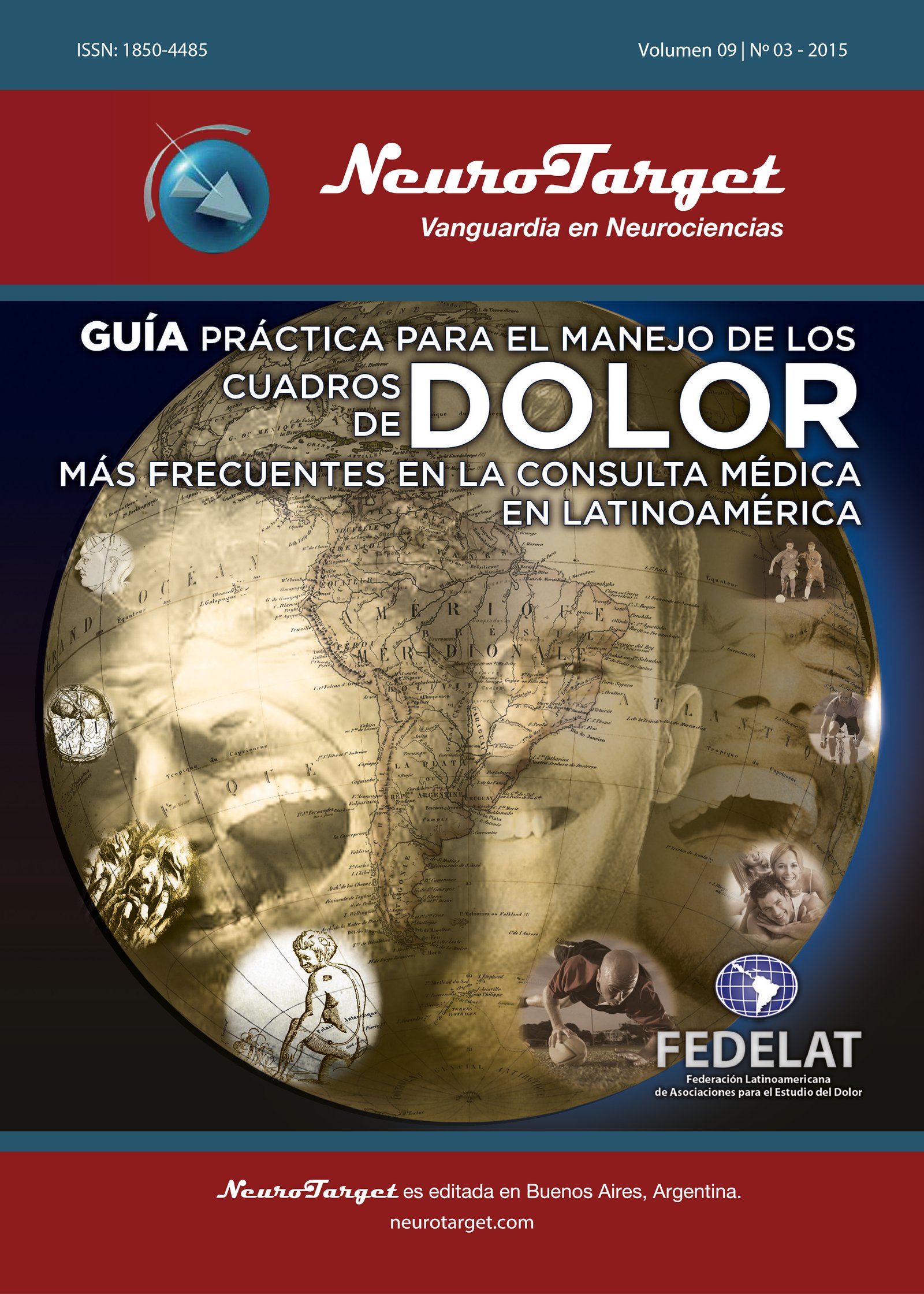FEDELAT Guidelines for the Management of Pain Conditions Common in Medical Practice in Latin America
DOI:
https://doi.org/10.47924/neurotarget2015223Abstract
Justification. The number of patients using analgesics is increasing due to the increasing prevalence of chronic degenerative diseases that cause pain, possibly associated with the changes that the structure of the Latin American population has undergone, with a growing number of inhabitants over 50. years of age (who use this type of drugs more frequently) and an increase in the number of surgical procedures in this age group, which were previously “off limits” due to the patient's age. Analgesics are often used inappropriately, either because the indicated dose is suboptimal or not convenient for the type of condition, or the analgesic is administered over a prolonged interval or because the patients themselves do not complete the recommended treatment. For the proper management of these patients, documents and guides have been prepared that attempt to provide recommendations for the correct use of these drugs, with the aim of offering the best treatment option or reducing the risks inherent to it, because, for the Treatment of pain, whether acute or chronic, optimal treatment is necessary for the patient's well-being and to improve their quality of life.
In 2009, the previous and first FEDELAT guide was prepared for the management of common pain symptoms in clinical practice in Latin America. This document is a completely new and updated one, based on the latest scientific evidence available at the time; In addition, special populations have been considered, which had not been considered in the previous document.
Objective. The FEDELAT Guide for the management of common pain symptoms in clinical practice in Latin America aims to be a reference framework for clinical decision-making based on recommendations supported by the best evidence currently available, with the purpose of homogenize medical conduct and practice for the adequate management of analgesia of the most frequent nosological entities in the adult population of Latin America: headache, osteoarthritis, low back pain, postoperative pain, neuropathic pain (diabetic polyneuropathy, postherpetic neuralgia, trigeminal neuralgia), fibromyalgia and oncological pain.
This guide is intended to improve the safety and quality of care for this population. The different phases of dissemination and implementation of clinical recommendations must be duly planned and supervised by the respective policy and regulatory bodies of the institution itself, as well as the respective government agencies.
Guide limitations. This guideline does not cover populations with conditions other than those mentioned, such as patients with collagen disorders, burns or wounds. It also does not cover pathologies of the pediatric population.
Scope. The guide is aimed mainly at doctors responsible for primary health care (first contact) or non-specialists and also at specialists who are involved in pain management.
Metrics
Downloads
Published
How to Cite
Issue
Section
License
Copyright (c) 2015 Miguel Ángel Genis-Rondero, Fabián César Piedimonte

This work is licensed under a Creative Commons Attribution 4.0 International License.
The article is distributed under the Creative Commons Attribution 4.0 License. Unless otherwise stated, associated published material is distributed under the same licence.







